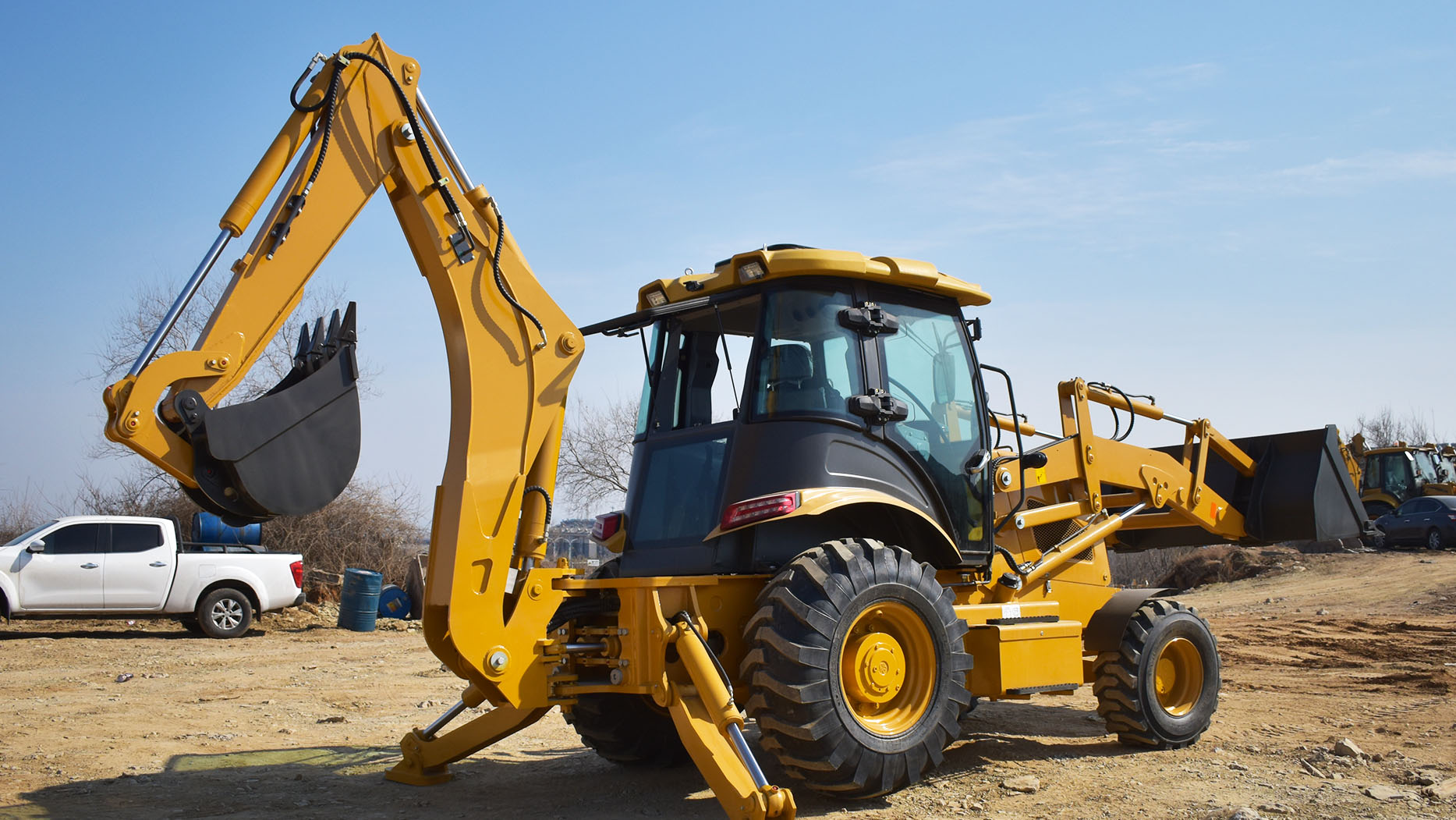I. Introduction
Backhoes are indispensable machines in construction, landscaping, and numerous other industries, renowned for their versatility in digging, lifting, and material handling. However, their power and complexity also present significant safety hazards if operated improperly. From trench collapses to collisions with underground utilities and rollovers, the potential for serious accidents is real. Therefore, a thorough understanding of safe operating procedures is not just recommended, but absolutely essential. This article aims to provide a comprehensive guide to safe backhoe operation, emphasizing the necessity of strict adherence to safety protocols to prevent accidents, protect workers, and ensure efficient and responsible work practices.
II. Pre-Operation Safety Checks
A. Personal Protective Equipment (PPE):
Before entering the operator's cab, ensure you are wearing the required PPE. This includes a hard hat to protect against falling objects, safety glasses to shield your eyes from debris, steel-toed boots to prevent foot injuries, and a high-visibility vest to enhance your visibility to other workers.
B. Machine Inspection:
A thorough machine inspection is crucial before each operation. Check all fluid levels, including hydraulic fluid, engine oil, and coolant, to ensure they are within the recommended ranges. Inspect tires or tracks for wear, damage, or proper inflation. Examine hydraulic hoses and connections for any signs of leaks or damage. Test all lights, signals, and alarms to confirm they are functioning correctly. Finally, check the functionality of all backhoe controls, ensuring smooth and responsive operation.
C. Worksite Assessment:
Before starting any digging, conduct a thorough assessment of the worksite. Identify and mark the locations of any underground utilities, such as gas lines, water pipes, and electrical cables, using "Call Before You Dig" services. Evaluate the ground conditions, including stability and slope, to identify potential hazards. Recognize any overhead hazards, such as power lines or trees, that could pose a risk. Establish a clear and safe working zone, using barricades or warning signs to prevent unauthorized access.
III. Basic Operating Procedures
A. Starting and Positioning the Backhoe:
Follow the manufacturer's recommended start-up procedures. Once started, carefully maneuver the backhoe to the work area, ensuring a clear path and avoiding obstacles. Stabilize the machine using outriggers, ensuring they are firmly planted on a stable surface.
B. Operating the Backhoe Arm and Bucket:
Familiarize yourself with the controls and their functions. Operate the boom, dipper, and bucket with smooth and controlled movements, avoiding sudden or jerky motions. Employ proper digging techniques to prevent tipping or damaging the machine. When handling materials, ensure they are securely contained within the bucket and avoid overloading. When dumping, choose a safe location and ensure no personnel are in the drop zone.
C. Traveling and Transporting the Backhoe:
When traveling within the worksite, maintain safe speeds and follow designated routes. When transporting the backhoe on trailers, ensure proper loading and unloading procedures are followed. Secure the machine with appropriate tie-downs and restraints to prevent movement during transport.
IV. Advanced Safety Considerations
A. Working Around Utilities:
Always use "Call Before You Dig" services to locate and mark underground utilities. When excavating near these lines, use hand digging or other safe excavation techniques to avoid damage. If you accidentally encounter a utility line, immediately stop work and notify the appropriate authorities.
B. Working on Slopes and Uneven Terrain:
Maintain stability by positioning the backhoe perpendicular to the slope whenever possible. Use outriggers effectively to level the machine and prevent tipping. Avoid sudden movements and keep the bucket low to the ground to lower the center of gravity.
C. Weather Conditions:
Exercise caution when operating in adverse weather conditions, such as rain, snow, or high winds. Reduced visibility and slippery surfaces can increase the risk of accidents. Adjust your operating procedures accordingly and take breaks as needed.
D. Signaling and communication:
Use standardized hand signals to communicate with other workers on the worksite, especially when visibility is limited. When necessary utilize radio communication to maintain clear communication. Ensure that all involved personnel understand the signals and communication protocols.
V. Emergency Procedures and Maintenance
A. Emergency Shutdown Procedures:
Familiarize yourself with the emergency shutdown procedures for the backhoe. Know how to quickly stop the machine in case of an emergency, such as a hydraulic leak or engine fire.
B. First Aid and Accident Response:
Maintain basic first aid knowledge to handle common backhoe-related injuries, such as cuts, bruises, and sprains. Report all accidents and near-misses to the supervisor and follow established reporting procedures.
C. Regular Maintenance:
Adhere to the manufacturer's recommended maintenance schedules. Perform daily, weekly, and monthly maintenance tasks, including checking fluid levels, inspecting hoses and connections, and lubricating moving parts. Recognize and address any signs of machine malfunction promptly.
VI. Conclusion
Safe backhoe operation is paramount for preventing accidents and ensuring efficient work practices. By adhering to pre-operation safety checks, following basic operating procedures, and considering advanced safety considerations, operators can minimize risks and protect themselves and others. Continuous training and adherence to safety guidelines are crucial for maintaining a safe working environment. Remember, safety should always be the top priority in backhoe operations.
Post time:Mar.27.2025



